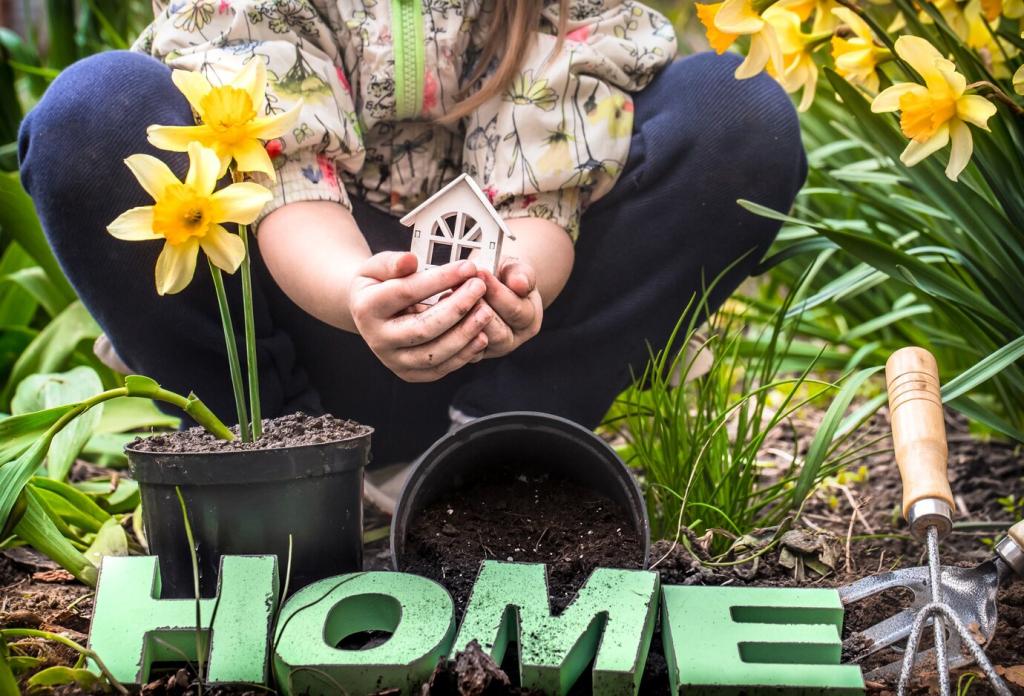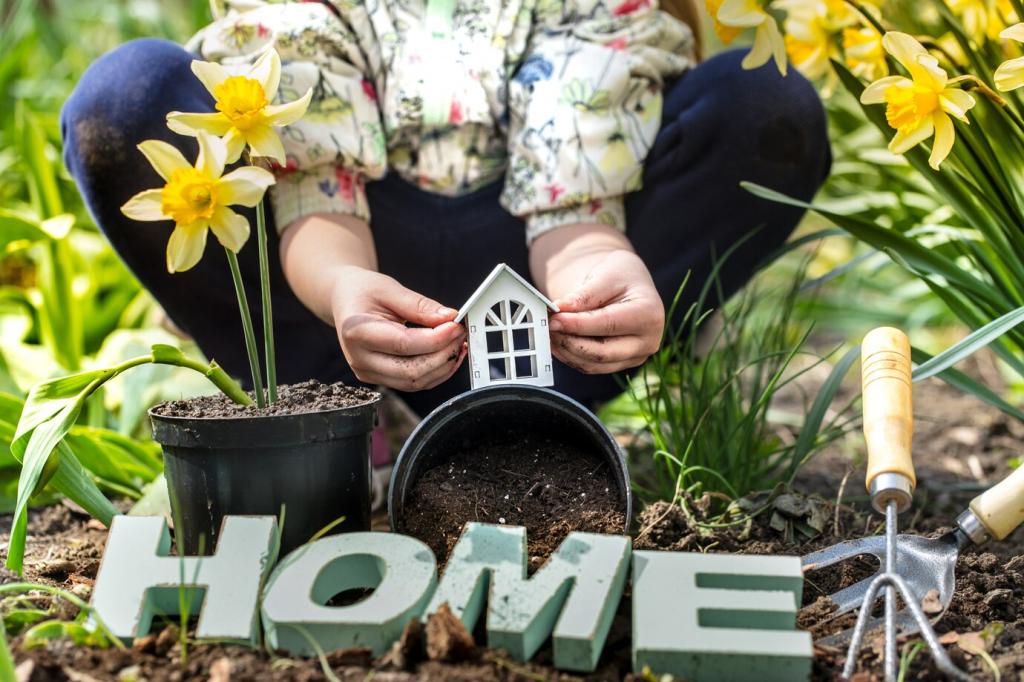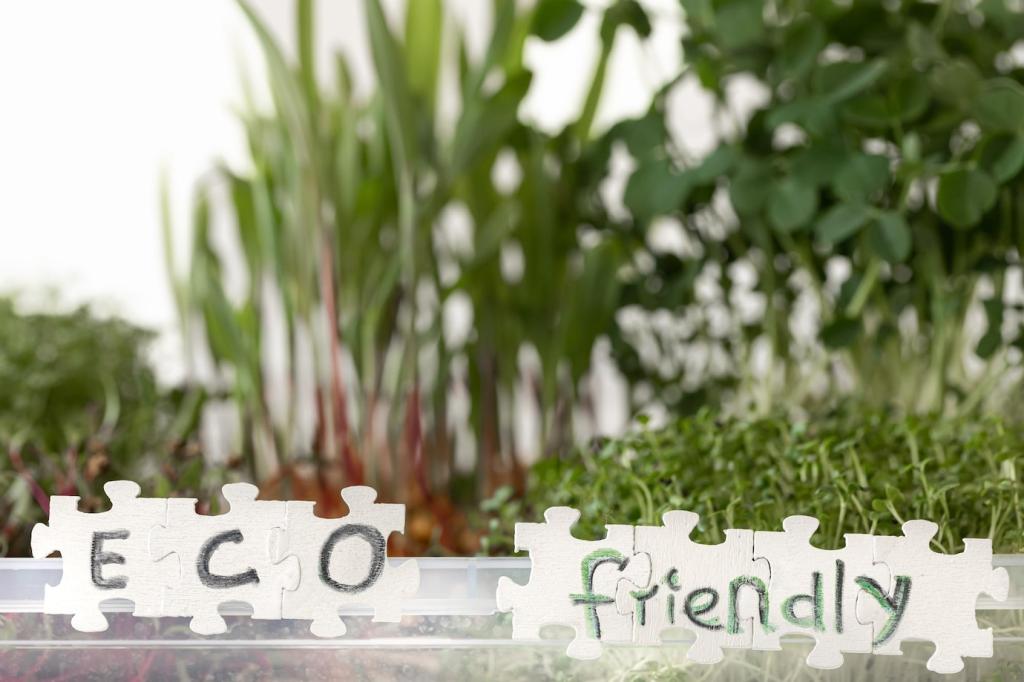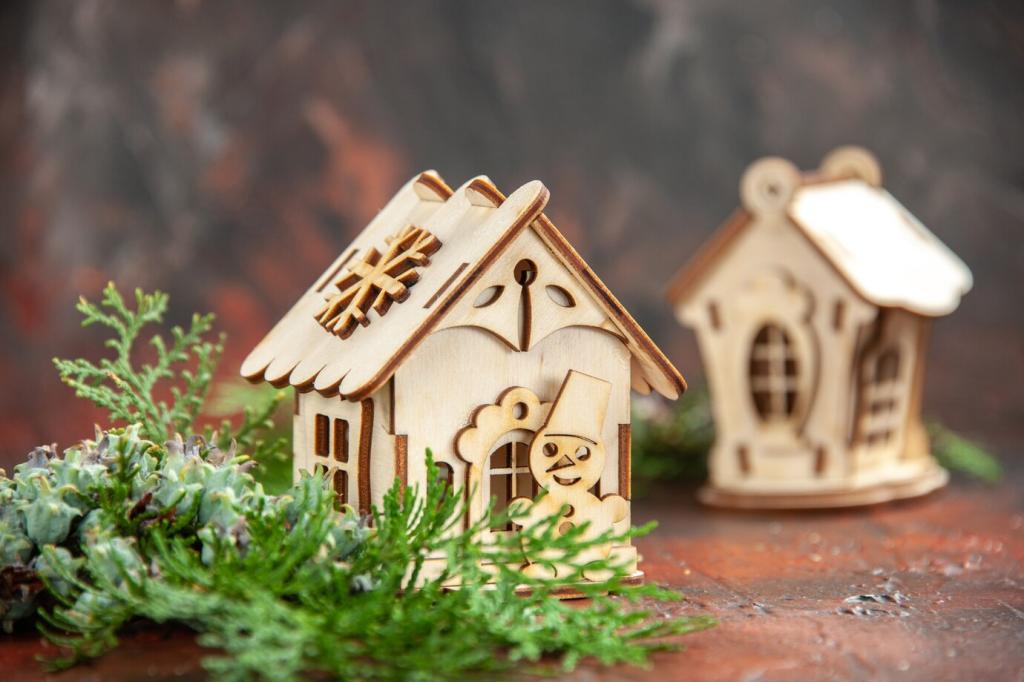Water-Wise: Harvest, Reuse, Infiltrate
A simple formula estimates harvest: roof area (square feet) × rainfall (inches) × 0.62 equals gallons. A 200-square-foot roof in a one-inch storm yields about 124 gallons. Pair a slim barrel with a first-flush diverter, overflow to a rain garden, and mulch to reduce evaporation.
Water-Wise: Harvest, Reuse, Infiltrate
Where permitted, a laundry-to-landscape loop can hydrate shrubs or fruiting vines through mulch basins. Choose plant-safe detergents, avoid salt and boron, and label valves clearly. Before cutting any pipe, check local codes. Small systems, done right, quietly turn chores into irrigation.






